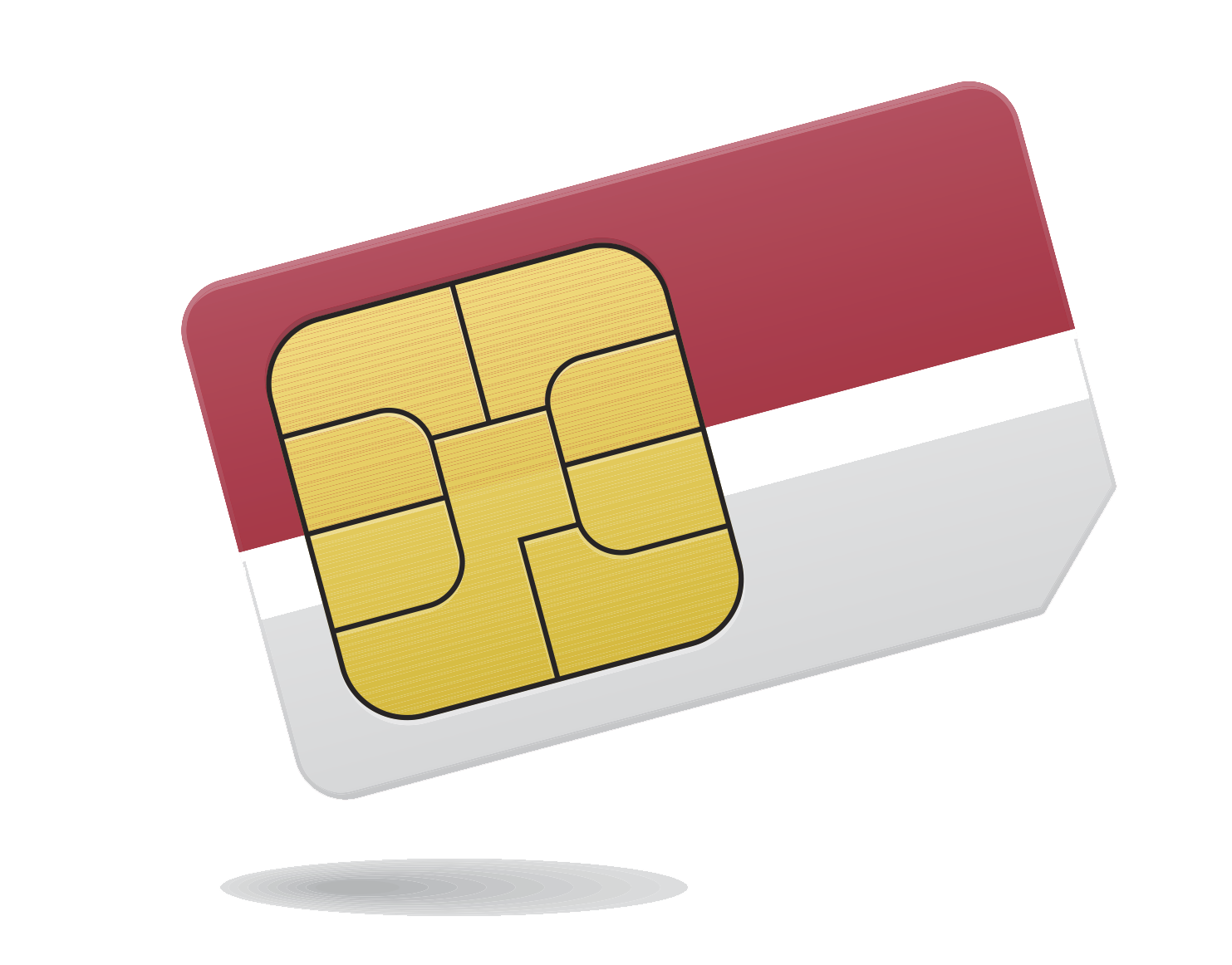
Stay Connected in India
Navigate, share, and stay in touch with our comprehensive eSIM guide for India.
1Introduction to India as a Travel Destination
India is a vast country, and staying connected as a traveler is crucial for navigation, communication, and sharing your experiences. Fortunately, India offers a range of options for mobile internet access, from local prepaid SIM cards with incredibly cheap data plans to international eSIMs that you can set up before you arrive. If you're a newcomer, you might be asking: how do I get internet in India as a tourist? The answer can be as simple as buying a tourist SIM at the airport or as quick as scanning an eSIM QR code on your phone. This guide will break down everything you need to know about getting online in India, including an overview of the mobile network providers, the differences between using an international eSIM vs a local SIM card, and which eSIM providers are best for India.
2Mobile and Internet Infrastructure
India has one of the world's largest mobile networks, with over a billion subscribers and extensive coverage across its vast geography. The primary operators are Reliance Jio, Bharti Airtel, Vodafone-Idea (Vi), and the state-run BSNL/MTNL.
In recent years, Jio and Airtel have become the dominant players, especially with 4G LTE services. Jio in particular rolled out a nationwide 4G network rapidly and now has the widest 4G coverage, reaching deep into rural areas and smaller towns (Jio operates on a 4G-only network with no 2G/3G fallback). Airtel also has a very extensive network, combining 2G/4G in most places, and is often praised for slightly better quality of service in some cities. Vi (Vodafone-Idea) has a decent presence but has been struggling financially; its coverage is good in urban areas, but in remote regions it may be less robust than Jio/Airtel. BSNL covers some rural areas and remote pockets where others might not, but it mostly offers 3G and is rolling out 4G slowly; as a tourist, you'd likely stick with Jio or Airtel for faster data. Major cities and tourist destinations (Delhi, Mumbai, Jaipur, Goa, Chennai, Kolkata, Kerala backwaters, etc.) have excellent 4G coverage from all private operators. Smaller towns and villages are often well-covered by Jio's network. In mountainous regions like the Himalayas, coverage can be hit-or-miss, with BSNL or Jio having towers in certain valleys. Expect patchy coverage inside wildlife reserves or the Thar desert. India has launched 5G in major cities, with Jio and Airtel deploying networks in urban areas. Mobile data in India is extremely affordable – the country offers some of the lowest data prices globally.
Network Providers Overview
| Provider | Coverage | Notes |
|---|---|---|
| Reliance Jio | Widest 4G coverage nationwide, reaching rural areas and small towns | Operates on 4G-only network with no 2G/3G fallback; excellent for travelers |
| Bharti Airtel | Very extensive network combining 2G/4G in most places | Often praised for better quality of service in some cities |
| Vodafone-Idea (Vi) | Good in urban areas but may be less robust in remote regions | Has been struggling financially; coverage not as reliable as Jio/Airtel |
| BSNL/MTNL | Covers some rural areas and remote pockets where others might not | Mostly offers 3G and is rolling out 4G slowly; not ideal for tourists |
3Guide to Getting Mobile Internet
Local SIM vs eSIM
When traveling in India, you have two main routes to get mobile data: purchasing a local SIM card (from an Indian carrier) or using an international eSIM that you set up ahead of time. Both options can work well, but there are important differences in terms of convenience and process. International eSIMs for India are usually data-only (no local Indian number for calls/SMS). This means you won't have a local number to make voice calls – but you can use WhatsApp or Skype for calls if needed, which many travelers find sufficient. The biggest advantage of eSIMs is convenience and immediate connectivity. You skip any queues or paperwork; upon arrival, your phone connects to a local network (the eSIM will roam on one of the Indian networks) and you have data to book a cab, check Google Maps, or message family that you arrived.
Where to Buy
Getting a local prepaid SIM in India is doable for foreigners, but it involves a bit of paperwork and patience. By regulation, you must provide proof of identity and a photo to get a SIM – for tourists, your passport and visa copies and a passport-sized photograph are required. If you go to a major network's official store (e.g., an Airtel or Jio store at the airport or in the city), they will have you fill out a form and will photocopy your passport and Indian visa. At airports like Delhi (DEL) or Mumbai (BOM), there are often telecom kiosks in the arrivals area specifically to help tourists get SIM cards. Once you submit the form, the activation of a new SIM can take anywhere from a few minutes up to a few hours. The upside of a local SIM: incredibly cheap data and ample calling. For example, Jio and Airtel offer tourist packs or regular prepaid packs like 1.5 GB per day plus unlimited calls for 28 days at maybe ₹300 (~$4). Having a local number means you can receive OTP (one-time passwords) for things like buying train tickets online (IRCTC) or using local UPI payment apps.
4Major Mobile Providers and Plans

Airalo
Airalo is a popular choice for many travelers because of its wide availability and competitive pricing. For India, Airalo's eSIM offers several data packs. Airalo's strength is that it partners with Jio's network in India, which ensures you get extensive 4G coverage wherever Jio is present – essentially almost everywhere in India, from big cities to rural areas. This means with Airalo, you'll likely remain connected in places where some other networks might drop. Airalo eSIMs are data-only, so you won't have a local number, but you can use data apps for communication. They support hotspot/tethering (so you can share your phone's connection with a laptop or other device). Activation is straightforward through the Airalo app or QR code.
| Plan | Data | Validity | Price | Features |
|---|---|---|---|---|
| India 1GB | 1 GB | 7 days | ~$4.50 |
|
| India 3-5GB | 3-5 GB | 30 days | ~$8-15 |
|
| India 10GB | 10 GB | 30 days | ~$20-22 |
|

Holafly
Holafly is known for its unlimited data eSIM offerings in many destinations. For India, Holafly provides an unlimited data eSIM plan as well, typically sold in increments of days. The appeal is obviously not worrying about data caps – you can use data freely for navigation, video, etc. However, Holafly's plan tends to be pricier than metered plans (since you pay a premium for unlimited), and importantly, Holafly does not allow tethering on many of its unlimited plans (to prevent abuse). So you wouldn't be able to use your phone as a hotspot for your laptop. Holafly's India eSIM runs on local networks (likely Airtel's 4G network in India). Airtel is a very good network, second only to Jio in coverage, so that's fine for most areas.
| Plan | Data | Validity | Price | Features |
|---|---|---|---|---|
| India 5 Days | Unlimited | 5 days | ~$19 |
|
| India 10 Days | Unlimited | 10 days | ~$34 |
|
| India 15 Days | Unlimited | 15 days | ~$47 |
|
| India 30 Days | Unlimited | 30 days | ~$64 |
|

Nomad
Nomad is another well-regarded eSIM provider with presence in India. Nomad's plans for India come in various sizes with 30-day validity. The pricing is similar to Airalo, sometimes a tad more but still reasonable. Nomad typically works on Airtel's network in India. Airtel is a top-tier network, so using Nomad means you'll tap into fast speeds and wide coverage in populated areas. In rural pockets where only Jio might be present, an Airtel-based eSIM might have no signal, but those cases are relatively few unless you're very off the grid. Nomad allows tethering on most of its eSIMs. The Nomad app is easy to use for purchase and installation. One advantage is that Nomad offers regional eSIMs too; if India is one stop on a multi-country Asia trip, you could get a regional plan that covers India plus others.
| Plan | Data | Validity | Price | Features |
|---|---|---|---|---|
| India 1GB | 1 GB | 7 days | ~$4 |
|
| India 3GB | 3 GB | 30 days | ~$8-9 |
|
| India 5GB | 5 GB | 30 days | ~$15 |
|
| Regional Asia | Various options | 30 days | Varies |
|

Local Indian SIM Cards
Getting a local prepaid SIM in India offers the best value but requires some paperwork. You can purchase SIM cards at airport kiosks or official carrier stores by providing your passport, visa, and a photo. Jio and Airtel are the recommended carriers for tourists due to their extensive coverage. Local SIMs provide incredibly cheap data plans - you can get packages with daily data allowances (e.g., 1.5GB per day) plus unlimited local calls for around ₹300 (~$4) for 28 days. Having a local number allows you to receive verification codes for services like train bookings or local payment apps.
| Plan | Data | Validity | Price | Features |
|---|---|---|---|---|
| Jio Tourist/Prepaid Pack | ~1.5 GB per day (42GB total) | 28 days | ~₹300 ($4) |
|
| Airtel Tourist/Prepaid Pack | ~1.5-2 GB per day | 28 days | ~₹300-400 ($4-5) |
|
| Vi (Vodafone-Idea) Prepaid Pack | Daily data allowance | 28 days | ~₹300-400 ($4-5) |
|
5Device Compatibility and Activation
For eSIMs, your device must be eSIM-compatible and unlocked. This includes iPhone XR/XS and newer, Samsung Galaxy S20 and newer, Google Pixel 3 and later, and many other recent smartphones. For physical SIM cards, your phone simply needs to be unlocked. Local SIMs will require your phone to support Indian network bands (most modern phones do). Both options require your device to be unlocked by your home carrier.
6Tips and FAQs for Staying Connected
Be Prepared for Verification Calls (Local SIMs)
If you get a local SIM, often activation requires a verification call. The operator may ask for the last 4 digits of your passport or the name given on the form. Try to do this step; airport staff sometimes do it for you. If your SIM isn't activating, you might need to call customer care from that SIM (they often have an English option). Indian SIMs often come with validity and need a recharge to extend beyond initial pack days – if you're staying long, ensure you recharge before expiry to keep it active.
Roaming Settings for eSIM
On some phones, an installed eSIM might be considered "roaming" since it's from a provider outside India. Make sure to enable Data Roaming for that eSIM in your cellular settings, otherwise it may not use data. Don't worry, if it's a plan for India, you won't get extra charges – the roaming toggle just allows it to connect properly to the partner network (e.g., Jio/Airtel).
Use Wi-Fi when available
Many hotels, cafes, and restaurants in India offer free Wi-Fi to patrons. Wi-Fi in hotels can range from excellent (in upscale or business hotels) to quite slow (budget guesthouses). Feel free to use it for heavy lifting tasks (like backing up photos or downloading big files), but given mobile data is so cheap and often faster, you might rely on your 4G for consistency. If using public Wi-Fi (airports, coffee shops, etc.), consider using a VPN for security if you access sensitive info.
Navigation and Essential Apps
Download important apps before arriving in India. Google Maps is essential; download offline maps for cities or regions you'll be in, so if you lose signal you still have navigation. Apps like Uber, Ola (for cabs), Zomato, Swiggy (for food delivery), IRCTC Rail Connect (train booking), MakeMyTrip (flight booking), and Google Translate can all be handy. If you're driving or on a road trip, be mindful that in very remote stretches you might lose data – but usually calls or SMS might still come through on 2G.
Stay Safe Online
India has a high rate of cyber scams. As a rule, never share your OTPs (one-time passwords) with anyone. If you get an SMS with an OTP and a call pretending to be "telecom support" asking for it – it's a scam. No legitimate service will ask for the code that was texted to you. Also, if you top up your SIM online, stick to official websites or apps.
Use Dual-SIM to Your Advantage
If your phone supports dual SIM (e.g., one physical, one eSIM), you can keep your primary SIM from home inserted (turned off for data to avoid roaming fees) but still receive texts or calls from home. For example, if your bank sends a security SMS to your home number, you'll get it. Make sure your phone is not using the home SIM for mobile data – lock it to use only the Indian SIM/eSIM for data and perhaps calls.
Network Selection in Remote Areas
If you travel to a remote area and find no signal on your eSIM, it could be that the partner network has no coverage there. Sometimes manually selecting a different network in your phone's settings can work if your provider allows roaming on multiple networks. For instance, if you have Airalo (on Jio) and you're somewhere Jio doesn't reach but Airtel does, you could try to manually switch to Airtel.
Conclusion
India offers travelers excellent mobile connectivity options with some of the world's cheapest data rates. For most visitors, the choice comes down to convenience versus value. International eSIMs from providers like Airalo (running on Jio's extensive network) or Nomad (using Airtel) offer hassle-free setup before arrival and immediate connectivity when you land. These are ideal for shorter trips or travelers who prefer avoiding paperwork. On the other hand, local SIM cards from Jio or Airtel provide incredible value with enormous data allowances at very low prices, plus the benefit of a local number for calls and verification codes. They do require some documentation and patience during setup. Whichever option you choose, you'll be well-connected throughout your Indian journey, even in smaller towns and tourist destinations, enabling you to navigate, communicate, and share your experiences with ease.